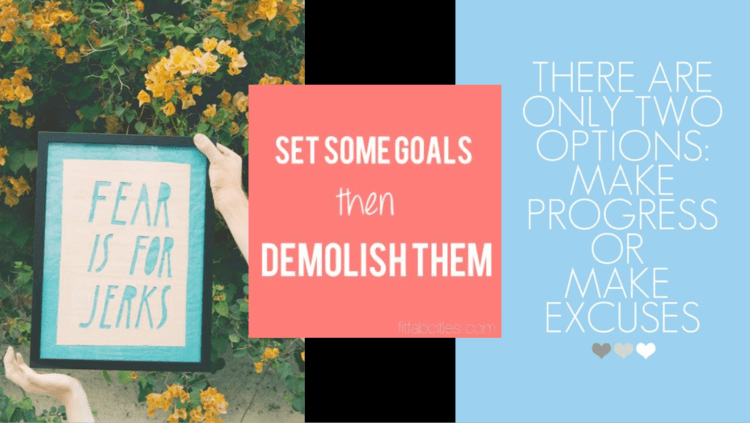The Wellness Industrial Complex
There is a lie—a simple but damaging fiction—that seeps under the doors of our yoga studios and burrows into our meditation cushions. It dresses up in cute quotes on Pinterest and has hacked its way into countless Instagram accounts. It smells weird; like someone tried to burn sage over a garbage can. But if we wrinkle up our noses and ask if anyone else smells that weird smell, all we get in response is nervous laughter. Our ears ache from the shrillness of the hollow words; we’re choking on the dust of toxic positivity; and through the haze we think we can see a place where the air is clean–but standing between us and that clearing stands a group of people wearing t-shirts with ancient holy symbols on them, which were purchased from a big box store.
Have you smelled the smell?
Have you tried to follow the advice of people who claim to have answers, only to end up feeling confused, even more overwhelmed than when you started, or like . . . maybe there is something is wrong with you?
What you are seeing—that glitch in the matrix—is the shadowy outline of an enormous industry: the Wellness Industrial Complex.
Let’s take a look.
What is the Wellness Industrial Complex?
The Wellness Industrial Complex is my name for the heady industry in which wellness and capitalism collide.
Wellness is BIG business: $4 trillion dollars (yes, that’s with a “t”). That’s larger than even the pharmaceutical industry.
The world of wellness brings a lot of good to our planet and its people. At its best, wellness is respectfully based on ancient traditions, proven by modern science, and accessible to all. It can heal hearts, bodies, and souls. It can offer us powerful correctives for the toxic world we live in, help us to find understanding of our deepest selves, and reveal ways to be of service to others.
But… At its worst, we see spiritual appropriation, the commoditizing and packaging of ancient traditions, and harmful half- and un-truths being spread by well-meaning but misinformed “teachers.” Perhaps most treacherous of all: we see people being sold the idea that they are broken and then sold snake-oil cures to try to find a fix.
Let’s be careful not to confuse the wellness industry with the Wellness Industrial Complex. The problem is not (entirely) with the services, or that they’re part of a business. The exchange of money is not what sullies them. It’s the cynical manipulation behind their marketing. Meditation is amazing. Yoga is terrific. The practices are not the problem and neither is paying good money for them; put them to use where you find them useful. But do it with intention, and with self-love—not the self-loathing that too often shames us to use them.
Real damaging “inspiration” messages from Pinterest.
Introducing: The Golden Cut
The key fiction—the driver of the entire Wellness Industrial Complex—is the idea that we must constantly improve ourselves.
When we are “working on ourselves” or becoming “better” people or trying to become our “best” selves, we are inadvertently allowing space for the lie that we are not there yet—that we are a little bit (or a lot) broken, and inherently need to be fixed, upgraded, or improved. When we believe that we are “made for more,” we are accepting the insidious corollary that we are not enough as we already are—that our lives, our character, our bodies, and even our spiritual selves—could use some improvement, always.
In this world view, good enough is never good enough. There are no off-ramps, no endings, no point at which you will ever be enough.
This idea—that we are broken and need to be fixed—is what I call The Golden Cut. It is self aggression masquerading as a journey towards self acceptance. It is a damaging fiction that has invaded the lives and hearts of so many of us, an unchecked moral imperative that has cloaked itself in the language of wellness and well-being.
Constant striving has become the planned obsolescence of the wellness world. It’s precisely how capitalism has invaded wellness.
How does it work?
In addition to the primary lie of The Golden Cut, there are other contributing factors that keep the Wellness Industrial Complex going:
We are told that difficult emotions like sadness and anger are things to be solved, rather than true expressions of our experiences.
Grief, fear, and anxiety are marketed as things to “fix” or to “move through” instead of true responses to real things that may or may not ever fully go away.
We are sold shame-based self care, where we focus on what we want to change about ourselves: we work out to change our bodies, we meditate to change our brains, we set resolutions to become a changed (upgraded!) person. Much of self care becomes performative rather than restorative.
“They” have the answers.
The cult of “it worked for me, so it will work for you” creates highly generalized formulas for individual bodies and souls, and people are left feeling like it is their fault if someone else’s formula fails them.
Prophets seek profits: self-appointed guru culture combined with social media means that anyone with a “look” and the nerve to claim expertise can get their message in front of the masses. When anyone can claim expertise, charisma can easily become charlatanism.
Systemic problems are masked as individual issues.
All of the truths of our broader society—including that it is violently racist, misogynistic, anti-Semitic, and homo- and transphobic—are also true in the world of wellness, but that reality is often buried beneath a veneer of “good intentions.”
Toxic positivity is used as a weapon to silence people who try to speak up about real problems.
These things are not true of the entire world of wellness, but they are effective ways to measure when something has moved from the world of true wellness into the world of the Wellness Industrial Complex.
So what do we do?
First of all, be very clear: anyone who wants to fix you thinks that you are broken. The ONLY WAY to love yourself is to love yourself exactly as you are, right now, today.
The truth is that the only one who can create the path back to your wellness, to your well-being, to reconnecting to your own wholeness—is you. The only path that is right for you is yours alone. Naturally there are deep wells of wisdom to tap into, ancient traditions, myriad healing modalities, and countless wonderful teachers. But there is also a morass of bullsh*t to navigate to get to these places.
The real truth: you don’t need to be fixed because you are not broken to begin with. You don’t need to “work on yourself” or “learn to be better” because those actions imply a brokenness inside of you which simply does not exist.
Your true path—all of our paths—will twist and turn. At times it may seem straight and narrow and at times it will seem meandering and expansive. You will find forks in the road, and different people will accompany you or lead you down varying parts. You will make mistakes, and you will learn from them. You will find obstacles and move around them. You will take some advice and leave the rest; you will commit deeply to the traditions that work for you; you will do the hard work necessary to make big moves; but you will be gentle with yourself as you go.
If it sounds like a lot of work, it is. But creating your own path is the path; forging your own way is the way. Committing to doing what works best for you is the precise way to take such good care of ourselves that we can help to build the world we want to live in.
But… what if I do want to do personal development?
Yes, me too! I love this stuff! There is so much to learn and try and benefit from.
And rejecting the Wellness Industrial Complex won’t shut you off from true healing and restorative truths. Calling bullsh*t on the lie that there is something wrong with you won’t stop you from growing; it will help you to feed your soul so that you can blossom beautifully!
Without a doubt, many of us have past traumas or abuses to heal from. To be sure, virtually everyone can benefit from connecting to old wisdom and learning new toolsets. And certainly, many of us have made mistakes that we deeply regret. We feel hurt, we cause hurt, we suffer, and we flounder.
But none of this means that we are broken; it means that we are human.
Any path or person that promises to help “fix” you or help you “be better” absolutely will not succeed in that because the idea that there is something wrong with you is the root cause of suffering. Or, to put it precisely the way that a therapist put it to me many years ago: your big problem is that you think there is some big problem with you.
You are not unhurt. You are not unscathed. But you are whole, and you are worthy.
So many of us who are drawn to paths of self-improvement arrive with very good intentions: to learn, to grow, to be of service to other people, and to help make the world a better place. Coming to terms with the fact that you are whole and unbroken will not stop these beautiful impulses; it will simply help you build upon a more solid, truthful foundation. Accepting yourself as you are will not keep you from your path in life; it will begin it.
You are complete, just not finished.
A friend of mine was on a retreat with a famous yoga teacher, and the class was doing a pose that asked the students to reach towards their toes. My friend described how the whole class was straining, trying valiantly to reach past their toes to demonstrate that they were serious students, trying to “be yoga” and prove something to their teacher and to each other. The teacher started giggling at them, laughing louder and louder until he called out to the class, “There is nothing on the other side of your toes!”
There is a well-known saying from Zen Buddhism:
“Before enlightenment: chop wood, carry water. After enlightenment: chop wood, carry water.”
Friends: there is nothing on the other side of our toes. We can reach and reach and stretch and change and "better” ourselves as much as we can . . . but the only way to find what we are looking for is to accept that we are already enough. The striving to be better is the problem, and there is an enormous industry built around selling us that striving in myriad forms.
You are already complete—and between now and the day you die, no matter how hard you work, you will never find a finish line. If you don’t sort out how to accept yourself exactly as you are in the present moment, there will be no accepting yourself in a future moment, either.
What we teach here at Eff This Meditation (and maybe this resonates for you, maybe it doesn’t—all good!) are specific things to try to learn how to make friends with yourself, ways to polish and buff your mirror in order to more clearly see the beauty inside of you, and ways to connect with the wisdom that lives inside of you. (We have many free offerings in our resource library that may help you along your journey.) The answers aren’t out here. Your path won’t match anyone else’s. You can’t change or upgrade or fix yourself into someone that connects with your own truth. You can’t hate yourself into someone you can love.
You can only love yourself. Right now.







